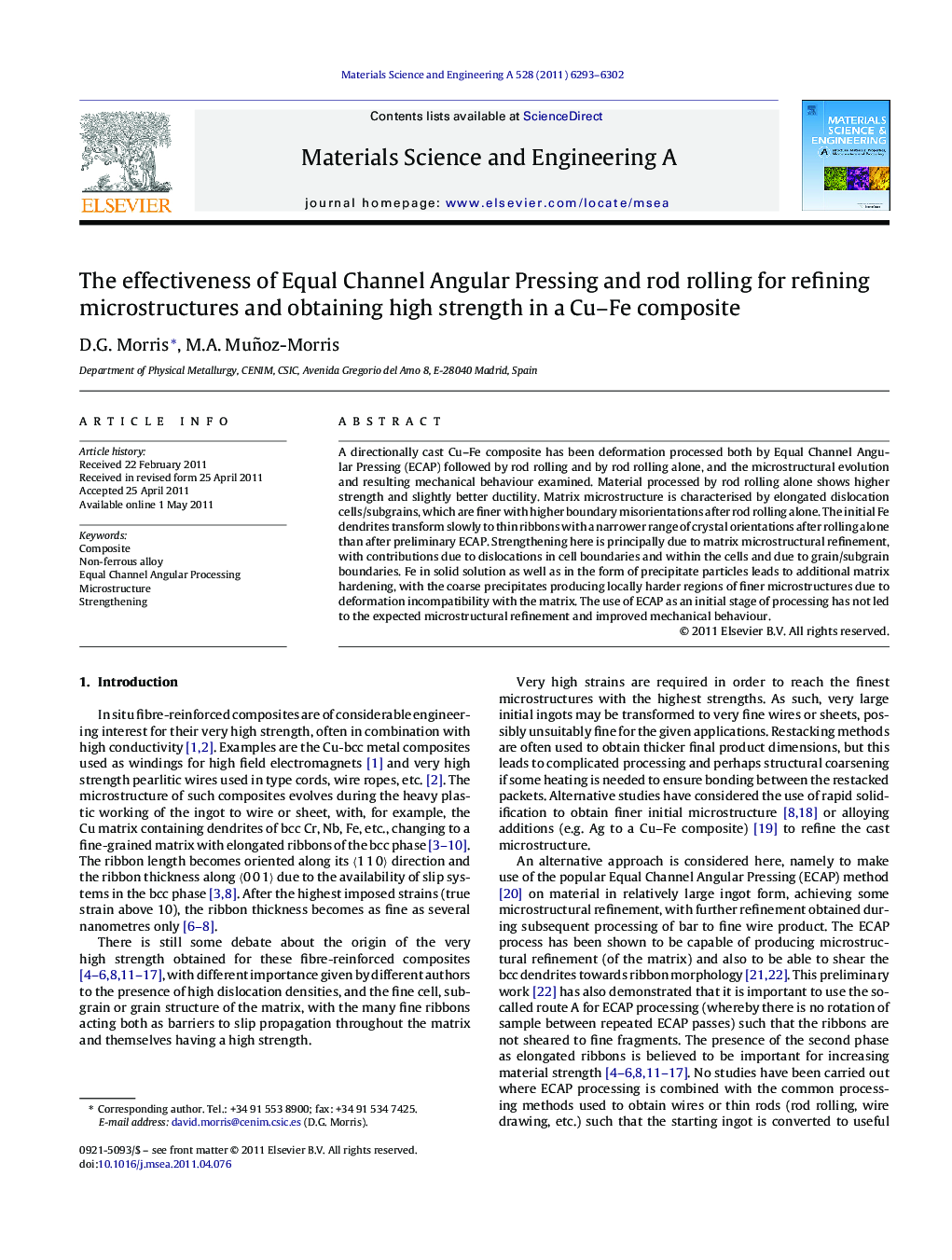| Article ID | Journal | Published Year | Pages | File Type |
|---|---|---|---|---|
| 1578614 | Materials Science and Engineering: A | 2011 | 10 Pages |
A directionally cast Cu–Fe composite has been deformation processed both by Equal Channel Angular Pressing (ECAP) followed by rod rolling and by rod rolling alone, and the microstructural evolution and resulting mechanical behaviour examined. Material processed by rod rolling alone shows higher strength and slightly better ductility. Matrix microstructure is characterised by elongated dislocation cells/subgrains, which are finer with higher boundary misorientations after rod rolling alone. The initial Fe dendrites transform slowly to thin ribbons with a narrower range of crystal orientations after rolling alone than after preliminary ECAP. Strengthening here is principally due to matrix microstructural refinement, with contributions due to dislocations in cell boundaries and within the cells and due to grain/subgrain boundaries. Fe in solid solution as well as in the form of precipitate particles leads to additional matrix hardening, with the coarse precipitates producing locally harder regions of finer microstructures due to deformation incompatibility with the matrix. The use of ECAP as an initial stage of processing has not led to the expected microstructural refinement and improved mechanical behaviour.
► Microstructure refinement occurs more rapidly during rod rolling than during ECAP. ► The copper matrix refines to finer cell size with higher boundary misorientation. ► Fe phase reorients better to fibres of the expected orientation during rod rolling. ► Very fine, highly misoriented substructures produce stronger, more ductile material.
